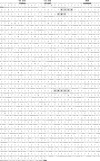MupB, a new high-level mupirocin resistance mechanism in Staphylococcus aureus
- PMID: 22252810
- PMCID: PMC3318397
- DOI: 10.1128/AAC.05325-11
MupB, a new high-level mupirocin resistance mechanism in Staphylococcus aureus
Abstract
Mupirocin is a topical antibiotic used for the treatment of skin infections and the eradication of methicillin-resistant Staphylococcus aureus carriage. It inhibits bacterial protein synthesis by interfering with isoleucyl-tRNA synthetase activity. High-level mupirocin resistance (MIC of ≥ 512 μg/ml) is mediated by the expression of mupA (ileS2), which encodes an alternate isoleucyl-tRNA synthetase. In this study, we describe high-level mupirocin resistance mediated by a novel locus, mupB. The mupB gene (3,102 bp) shares 65.5% sequence identity with mupA but only 45.5% identity with ileS. The deduced MupB protein shares 58.1% identity (72.3% similarity) and 25.4% identity (41.8% similarity) with MupA and IleS, respectively. Despite this limited homology, MupB contains conserved motifs found in class I tRNA synthetases. Attempts to transfer high-level mupirocin resistance via conjugation or transformation (using plasmid extracts from an mupB-containing strain) were unsuccessful. However, by cloning the mupB gene into a shuttle vector, it was possible to transfer the resistance phenotype to susceptible S. aureus by electroporation, proving that mupB was responsible for the high-level mupirocin resistance. Further studies need to be done to determine the prevalence of mupB and to understand risk factors and outcomes associated with resistance mediated by this gene.
Figures


References
-
- Clinical and Laboratory Standards Institute 2011. Performance standards for antimicrobial susceptibility testing. 21st informational supplement. M100-S21. CLSI, Wayne, PA
Publication types
MeSH terms
Substances
LinkOut - more resources
Full Text Sources
Other Literature Sources
Medical

